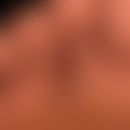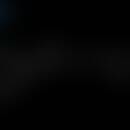Synonym(s)
DefinitionThis section has been translated automatically.
Severe, unsuppressible permanent itching in chronic renal insufficiency (stages 3a-5, CKD stages according to KDIGO) due to retention of urinary substances. This pruritus occurs in around 25 % of chronic kidney disease patients. It can be localized or generalized. Dialysis patients also very frequently suffer from pronounced itching.
Itching in dialysis patients occurs as permanent itching (probably as a sign of uremic neuropathy) or as intermittent dialysis itching (possibly hypersensitivity to substances in the extracorporeal circuit such as plasticizers, latex, formaldehyde). A connection with secondary hyperparathyroidism in uremia is being discussed (see also renal insufficiency, skin changes). Remarkably, pruritus is a rare problem in dialyzed children.
EtiopathogenesisThis section has been translated automatically.
The pathogenesis is still largely unexplained. In addition to neuropathic disorders with possible receptor proliferation of the fibers, central nervous disorders are also being considered. It is suspected that secondary hyperparathyroidism plays an etiopathogenetic role.
You might also be interested in
General therapyThis section has been translated automatically.
The following practical procedure is recommended for patients with chronic kidney disease (in accordance with the guidelines of the German Society of Nephrology):
- Exclusion of pronounced anemia, severe secondary hyperparathyroidism or
- aluminum intoxication after many years of taking aluminum-containing phosphate binders.
- If no cause for the itching can be identified, topical treatment should be started first. (see below)
- If topical therapy is not sufficient, itching can occasionally be relieved in patients already on dialysis by increasing the duration and frequency of dialysis.
- If these therapeutic approaches have not led to any relief of the symptoms, systemic therapy should be carried out.
- A definitive elimination of uraemic pruritus is only possible through a kidney transplant.
External therapyThis section has been translated automatically.
The treatment of first choice is UV irradiation (UVB or high-dose UVA1).
Alternatively: Capsaicin (0.01-0.5 % in a cream base or as a shaking mixture, see below Capsaicin as a formulation) is helpful in some cases, at least temporarily. Caution! Therapy costs! See below renal insufficiency, skin changes.
Intensified skin care: The integument of the patient with renal insufficiency is dry and very scaly. Consistent external skin care measures such as lubricating lotions twice a day (e.g. Excipial Lipolotio, Lipoderm Lotion) are indicated. Externals with added urea are generally well tolerated (e.g. 2-5 % urea cream, Nubral cream or Excipial Hydro- or Lipolotio, R102, R104 ). Extremely sparing use of cleansing agents such as syndets or soaps. Instead, use hydrophilic body oils as a substitute for washing (e.g. hydrophilic body oil or ready-made preparations which are generally used as oil baths (e.g. Cordes oil bath, Linola Fett N oil bath, Balneum Hermal oil bath).
Internal therapyThis section has been translated automatically.
The evidence base for the efficacy of various medications (e.g. gabapentin, gamma-linolenic acid) for the treatment of uraemic pruritus is limited. For this reason, no general recommendations can be made.
Remember! Oral antihistamines are ineffective.
Alternative options that have proven successful in studies: activated charcoal 6 g/day, gabapentin 3 times/week 300 mg after dialysis.
Alternative: Recently, successes have been described with ondansetron (e.g. Zofran 4-8 mg / day). Successes with low-dose erythropoietin have been described (18 U / kg bw / day, 3 times / week i.v.).
Alternative: trial with the non-acidic non-opioid analgesic metamizole 1000--2000 mg / day (e.g. Novalgin 2-4 tbl.).
Alternative: opioid antagonists such as naltrexone (50 mg / day). The study results on naltrexone are contradictory. Considerable side effects such as nausea, vomiting, sleep disturbances or dizziness should be noted.
Experimental: Thalidomide 100 mg / day showed a soothing effect in controlled studies(off-label use).
LiteratureThis section has been translated automatically.
Legroux-Crespel E et al (2004) A Comparative Study on the Effects of Naltrexone and Loratadine on Uremic Pruritus. Dermatology 208: 326-330
Mettang T (2016) Uremic Itch Management. Curr Probl Dermatol 50:133-141.
Scherer JS et al (2017) Sleep Disorders, Restless Legs Syndrome, and Uremic Pruritus: Diagnosis and Treatment of Common Symptoms in Dialysis Patients. On J Kidney Dis 69:117-128.
- Ständer S et al (2006) Diagnostic and therapeutic procedures in chronic pruritis. J Dtsch Dermatol Ges 4: 350-370
Outgoing links (15)
Capsaicin; Capsaicin cream, hydrophilic 0.025/0.05 or 0.1% (nrf 11.125.); Erythropoietin; Gabapentin; Lotion; Metamizole; Off-label use; Ondansetron; Pruritus; Renal failure chronic; ... Show allDisclaimer
Please ask your physician for a reliable diagnosis. This website is only meant as a reference.




